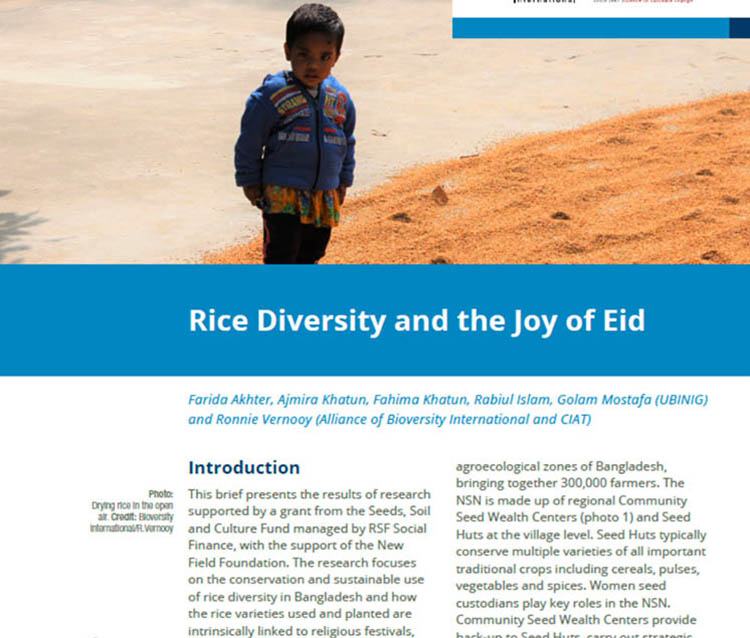
UBINIG research on Rice varieties and religious festivals is focused on the conservation and sustainable use of rice diversity in Bangladesh and how the rice varieties used and planted are intrinsically linked to religious festivals, food culture, land morphology and the climate that shape rice farming/cropping in this region. The information was collected from farmers in the villages who have been growing different varieties of rice for different uses of food preparation.
UBINIG has also been running Community Seed Wealth Centers (community seed banks) and the Nayakrishi farmers are managing them in ensuring the conservation of the varieties that are in danger of disappearing and in supplying farmers with diverse, good quality seed.
Conserving diverse varieties of rice in Bangladesh is not just about conservation and nutrition; rice is a food crop that contributes to the happiness of millions of farming families on different cultural and religious occasions. Eidul-Azha – the second largest annual religious Muslim festival – was celebrated across Bangladesh on 12 August 2019, following the 10th moon day of the Arabic month of Zilhaj (the twelfth and final month of the Islamic calendar). The information were collected for this Eid in 2019.
The most common dishes prepared in four sites (Pabna, Natore, Tangail and Dhaka city) are payesh (also known as kheer) and firni, both sweet dishes made of rice and milk flavoured with dried fruit, nuts and spices, pulao (rice cooked with butter-oil and flavoured with hot spices), khichuri (rice with pulses, turmeric and spices) and chaler-ruti (rice-flour bread), that go well with the different meat dishes.
(This article has been published in CGSpace.